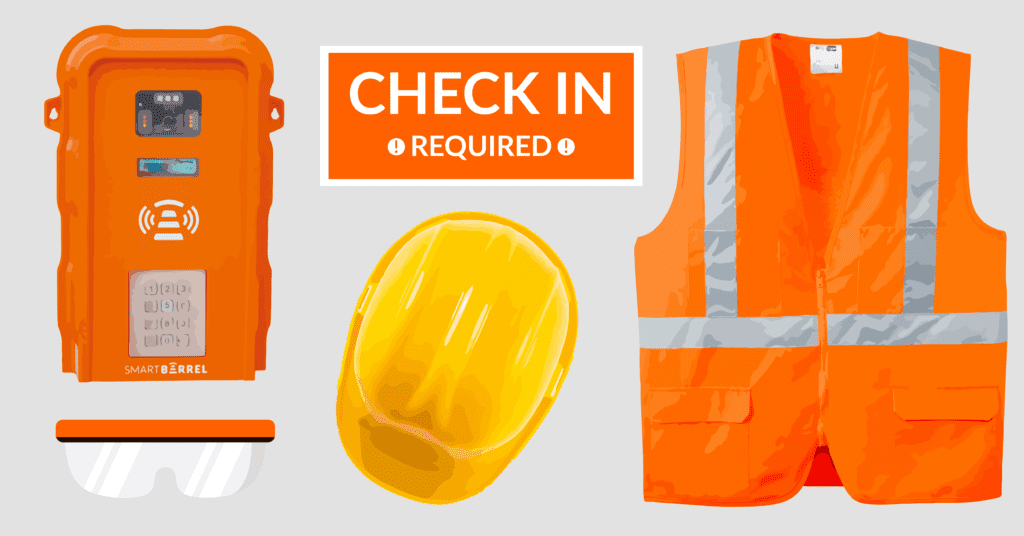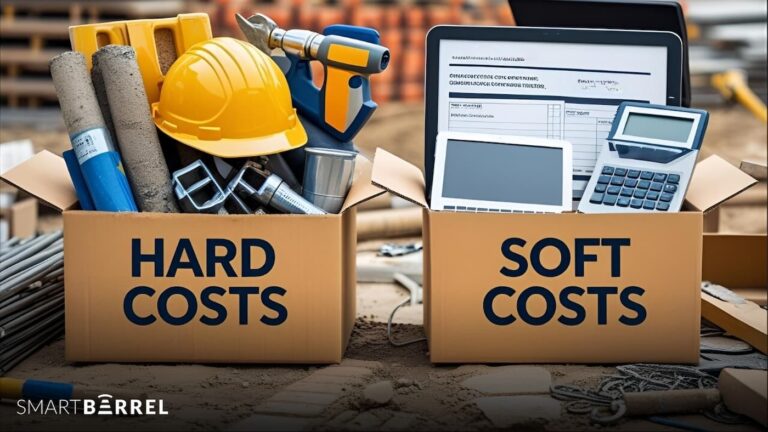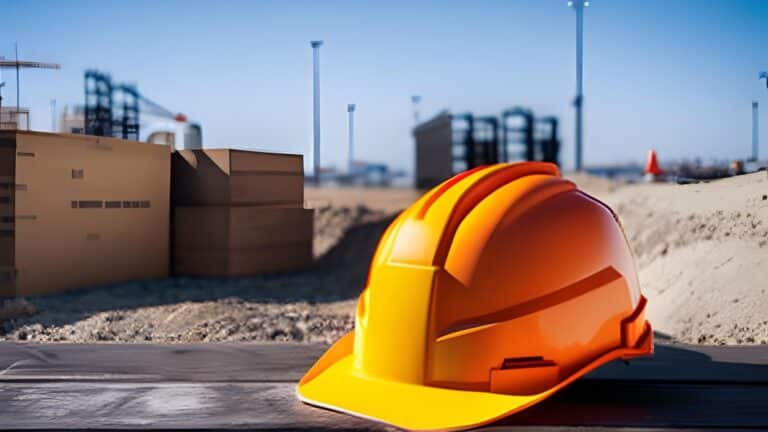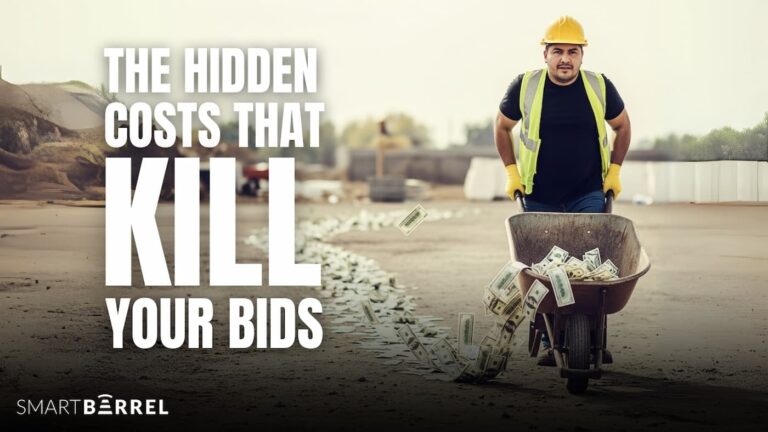According to the Bureau of Labor Statistics’ most recent Census of Fatal Occupational Injuries, construction is one of the industries with the highest number of fatal injuries. Construction is a dangerous industry to work in, with workers at risk due to falling objects, heights, hazardous chemicals, noise-induced hearing damage, and injuries from machinery and power tools.
But safety incidents don’t have to be a regular occurrence. With the right tools and measures in place, contractors can prevent on-site construction hazards to ensure the health and safety of all workers.
Keep reading to learn more about preventing hazards on your job site, and how the SmartBarrel device can help with safety tracking and access control.
Invest in technology
The best way to avoid hazards in construction sites is to invest in technologies that offer safety features. Despite the industry’s hesitance to adopt new technologies, various tools and platforms can enhance how the industry operates, including addressing one of its core issues: safety.
The right technology will allow you to document safety data and observations from the field to simplify the reporting process. Ease of access also makes reports more reliable, as managers will be less likely to delay reporting and later recall events inaccurately. Ideally, you’d also be able to track the number of safety incidents occurring on-site.
Look for technologies that offer employee tracking features, which allow you to see exactly who is present on a job site. A broadcasting feature can also be handy in cases where you need to communicate alerts.
Technology can not only improve efficiency by automating tasks and reducing the need for overhead, but can greatly enhance safety.
Enforce personal protective equipment and provide safety training
One standard method to prevent construction hazards is to give workers the correct personal protective equipment (PPE), such as hard hats, safety vests, eye protection, and industrial gloves. But it’s not enough to just provide them—their use must also be monitored and enforced. Ensure all employees are trained on proper use, care, and any limitations.
Safety training in general must also be provided on things such as fall prevention or working in enclosed spaces. Draft out safety plans, provide supervision, and verify that workers have completed their safety training. It’s important to ensure that workers have the right qualifications and certifications as well, particularly signalers and equipment operators.
To further prevent construction hazards, you can encourage workers to keep job sites tidy and report unsafe conditions to supervisors.
Put up signage
Another standard way to prevent safety hazards on a construction site is to put up clear and easily-readable signage.
Not only does it help with maintaining facility compliance, but it can alert both workers and visitors to potential risks (and what steps they should take to avoid them, such as wearing hard hats or walking around fencing instead of within). Warning signs should be placed, particularly where vehicles and machinery are used.
If needed, consider putting up bilingual warning signs, especially if your construction firm has hired non-native English speakers or you’re working in an area that primarily speaks another language.
Signs should be weather resistant, resist fading from UV rays, temperature tolerant, and durable enough to withstand rough work environments.
Use heavy equipment with caution
One of the most dangerous types of hazards in construction sites is using heavy equipment, since it places workers at a high risk for being seriously or fatally injured.
Heavy equipment should always be properly maintained, and only licensed and qualified workers should be allowed to operate them accompanied by a dedicated signaler. Ensure that operating manuals are readily available for workers to review if needed.
Advise workers to only proceed if they have a clear view of pathways, and to tie back long hair and avoid wearing baggy clothing that could get caught in mobile parts.
Improve sanitation and protect against agents to prevent disease and illness
Often overlooked, but still crucial to preventing construction hazards is sanitation. Diseases can be spread by prolonged exposure to bacteria, viruses, and asbestos. Employees who regularly work with biological and chemical agents are especially at risk too.
Employers should encourage workers to practice good personal hygiene on-site and follow sanitation protocols, but should also provide proper waste removal, soap and sanitizer, and running water at all times. Workers who deal with agents should be given respiratory protection to prevent exposure to harmful substances from going over the mandated safety limit.
Implement access control measures
Construction equipment theft has cost the U.S. millions of dollars per year, which is why access control is an important security measure and another way to avoid safety hazards on a construction site.
Access control systems can be as simple as putting up secure perimeter fencing with limited entry points, or as sophisticated as technology with biometric facial recognition to verify a permitted visitor’s identity. It helps to hire security guards to patrol and monitor construction sites, but technologies are a good cost-effective alternative.
Encourage workers to be wary of and report unfamiliar visitors or suspicious activities.
SmartBarrel, the solution to construction hazards
The SmartBarrel device is a magnetic plug-and-play box that’s weatherproof, LTE-connected, and solar-powered, and includes safety tracking and access control features to minimize hazards on your construction site.
Our safety tracking feature combines many elements, including instant PPE verification. Rest assured as the SmartBarrel device scans for PPE including hard hats, safety glasses, and masks, all information is displayed on a connected dashboard to show whether workers are safety compliant or not so you never lose track of your job site.
Upon check-out each worker will also get an SMS sent to their device to ask whether there has been an incident on the job-site. The SMS communication is in both English & Spanish. All incidents are seen and easily reportable on the SmartBarrel dashboard and all records are stored in one centralized location for your convenience.
The SmartBarrel device and dashboard are designed to be intuitive and easy-to-use, so set-up is quick with little to no training required for new users. As a self-connected box, there’s also very little maintenance required.
Other safety tracking features include:
- Easy employee onboarding: Cut your admin time in half and streamline the onboarding process with automatically-generated badge IDs and the ability to easily collect emergency contact information and worker info through SMS.
- Message broadcasting capabilities: Make communication on the job site more efficient by effortlessly sending a message that goes to all employees/workers on the job or company-wide to notify of any safety issues, weather warnings, alerts, egress, and job site updates.
- Site Safety orientation tracking: Upon clocking in, each employee will get an SMS to their phone to ask if they completed the site safety orientation.
The SmartBarrel device also offers access control features. Limit who can enter your job site through a biometric facial recognition system. It’s multi-functional and serves for tracking time and security purposes. You’ll be able to access a list of all workers on the job once they’ve signed in to eliminate inefficient manual headcounts. Plus, more importantly, only verified workers and guests will be admitted to the job site.
Our device is an intelligent solution that makes every job site more productive, safe, and secure, no matter how big or small. Mitigate risk on the job site and book a demo with SmartBarrel today!






